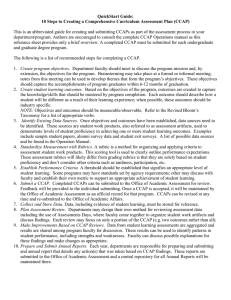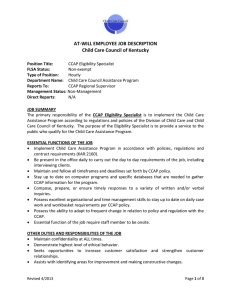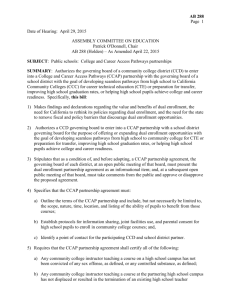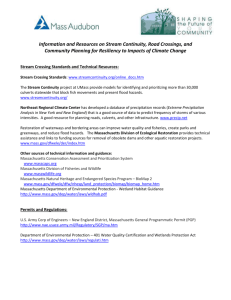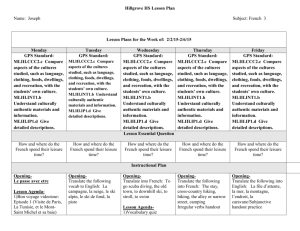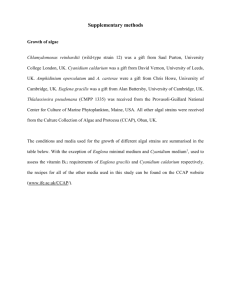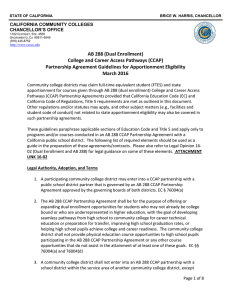Document 12084420
advertisement
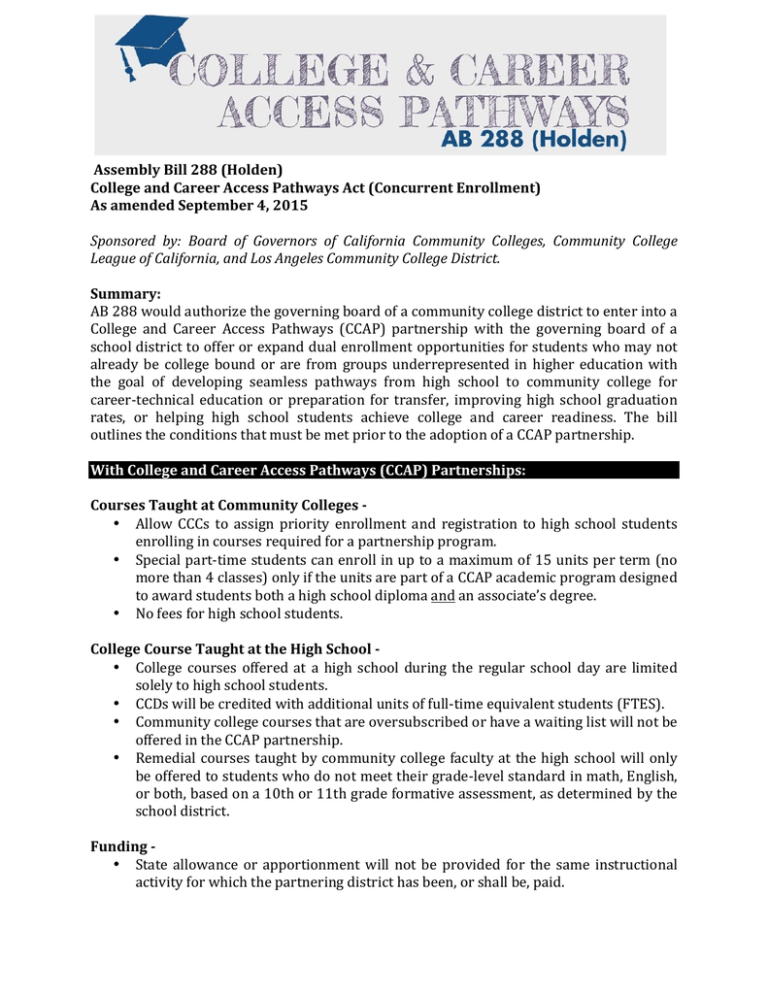
Assembly Bill 288 (Holden) College and Career Access Pathways Act (Concurrent Enrollment) As amended September 4, 2015 Sponsored by: Board of Governors of California Community Colleges, Community College League of California, and Los Angeles Community College District. Summary: AB 288 would authorize the governing board of a community college district to enter into a College and Career Access Pathways (CCAP) partnership with the governing board of a school district to offer or expand dual enrollment opportunities for students who may not already be college bound or are from groups underrepresented in higher education with the goal of developing seamless pathways from high school to community college for career-­‐technical education or preparation for transfer, improving high school graduation rates, or helping high school students achieve college and career readiness. The bill outlines the conditions that must be met prior to the adoption of a CCAP partnership. With College and Career Access Pathways (CCAP) Partnerships: Courses Taught at Community Colleges -­‐ • Allow CCCs to assign priority enrollment and registration to high school students enrolling in courses required for a partnership program. • Special part-­‐time students can enroll in up to a maximum of 15 units per term (no more than 4 classes) only if the units are part of a CCAP academic program designed to award students both a high school diploma and an associate’s degree. • No fees for high school students. College Course Taught at the High School -­‐ • College courses offered at a high school during the regular school day are limited solely to high school students. • CCDs will be credited with additional units of full-­‐time equivalent students (FTES). • Community college courses that are oversubscribed or have a waiting list will not be offered in the CCAP partnership. • Remedial courses taught by community college faculty at the high school will only be offered to students who do not meet their grade-­‐level standard in math, English, or both, based on a 10th or 11th grade formative assessment, as determined by the school district. Funding -­‐ • State allowance or apportionment will not be provided for the same instructional activity for which the partnering district has been, or shall be, paid. • Places a statewide 10% cap on the total number of special part-­‐time or full-­‐time students that can be enrolled in the community college system. Partnership Parameters -­‐ • Prohibits a community college district from entering into a CCAP partnership with a school district within the service area of another community college district, unless an agreement exists or is established between the community college districts authorizing the partnership. • Must certify that no community college instructor or qualified high school teacher has been displaced or terminated as a result of the CCAP partnership. • Must certify that any community college instructor teaching a course on a high school campus has not been convicted of any sex offense. • Must certify that CCAP partnership will not lead to the displacement of otherwise eligible adults in the community college. • Must comply with local bargaining agreements and all state and federal reporting requirements. • CCAP partnership shall specify which district will be the employer of record. Reporting Requirement -­‐ • Total number of students enrolled at each schoolsite by gender and ethnicity. • Total number of CCC courses • Course completions, including percentage of course completions by category, type, and schoolsite. • Total number of full-­‐time equivalent students (FTES) generated by students in CCAP partnerships. • Includes a sunset clause that would eliminate the law on January 1, 2022 and includes reporting language from the Chancellor’s Office to examine the sunset.
